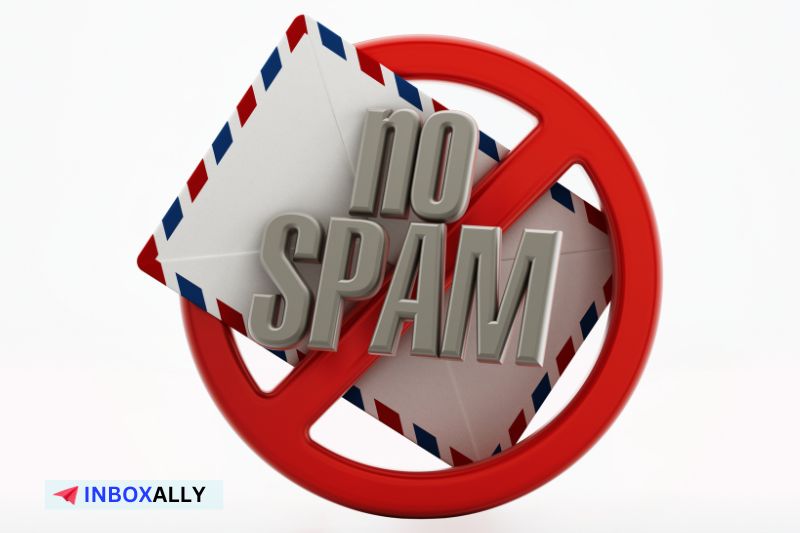Ao enviar e-mails em massa, você deve garantir que cada e-mail chegue à caixa de entrada do destinatário e que o conteúdo seja exibido de forma clara e correta. No entanto, esses e-mails são enviados a assinantes que usam diferentes navegadores, dispositivos e caixas de correio com infraestrutura e filtros de spam variados. Portanto, testar seus e-mails para levar em conta todas essas variáveis é vital para sua campanha de e-mail.
Mas será que a lista de sementes é a melhor maneira de fazer isso? Como você implementa e usa efetivamente uma lista de sementes para suas campanhas de e-mail? Se essas são algumas das perguntas que o incomodam, então você está no lugar certo.
Aqui você encontra os insights importantes sobre o que é uma lista de sementes, por que ela é importante para o marketing por e-mail, como criá-la e muito mais. Descubra o valor de uma lista de sementes e use-a para aumentar a capacidade de entrega de seus e-mails hoje mesmo!
O que é uma lista de sementes?
Em termos simples, uma lista de sementes é uma lista de endereços de e-mail para os quais você envia primeiro seus e-mails de marketing antes de enviá-los aos seus assinantes reais. Isso permite que você decida como seus e-mails são recebidos, como eles aparecem e como seus assinantes interagem com eles. Também é uma forma de garantir que seu e-mail chegue à caixa de entrada do assinante, e não à pasta de spam.
![]()
Há vários tipos de listas de sementes de e-mail, mas aqui estão as mais comuns:
- Lista de sementes pessoais – é aqui que você cria contas de e-mail com diferentes provedores de caixa de correio e as usa para enviar e-mails de teste. Algumas empresas ou negócios usam os endereços de e-mail de seus funcionários.
- Lista de sementes específica – criada para testar e solucionar problemas específicos com um determinado provedor de caixa de correio. Ou seja, ter uma lista de sementes de endereços do Gmail, por exemplo, para testar o desempenho de seus e-mails no Gmail.
- Lista de sementes profissional – criada por uma equipe de especialistas em e-mail. Geralmente tem um custo, mas possui uma lista maior e mais diversificada de endereços que são atualizados e mantidos regularmente.
A melhor lista de sementes para você dependerá de suas necessidades e de seu orçamento. No entanto, as listas de sementes profissionais oferecem mais valor a longo prazo. Além de consumir menos tempo para criar e manter, elas são mais abrangentes e darão a você uma visualização detalhada do desempenho do seu e-mail.
Por que uma lista de sementes é importante no marketing por e-mail?
As listas de sementes fornecem a você o insight necessário para atualizar suas campanhas de e-mail de um sucesso ou fracasso para um sucesso constante. O principal objetivo de uma lista de sementes é permitir que você acompanhe e monitore como diferentes clientes de e-mail interagem com seus e-mails. Mas se você analisar melhor, há vários benefícios importantes em ter uma lista de sementes, que facilitarão o sucesso de sua estratégia de marketing por e-mail, como
Manter-se atualizado com as tendências do setor também é fundamental para um marketing por e-mail eficaz. Conferir os principais blogs de marketing por e-mail pode fornecer insights valiosos e manter você informado sobre as práticas recomendadas do setor.
Detecção precoce e solução de problemas de entrega
Imagine você enviar um e-mail para todos em sua lista de e-mails e descobrir que houve um erro de digitação na linha de assunto, que os links estão quebrados ou que os e-mails nunca chegaram ao destinatário desejado. Uma lista de sementes é como uma lista de teste que pode ajudar você a evitar isso. Você pode resolver quaisquer erros ou problemas de entrega com sua campanha de e-mail antes de lançá-la oficialmente.
Como evitar pastas de spam
A morte de suas campanhas de e-mail começa quando seus e-mails vão parar na pasta de spam. Mas se você pudesse entender como os diferentes filtros de spam se comportam em diferentes clientes de e-mail, estaria em uma posição melhor para evitar as pastas de spam. Felizmente, uma lista de sementes pode ajudar você com isso. Ao realizar um teste de lista de sementes, você pode identificar como seus e-mails acionam diferentes filtros de spam e corrigir os problemas antes que sua campanha de e-mail seja lançada.
Aumento das taxas de abertura ou de cliques
Ao enviar e-mails para sua lista de sementes primeiro, você pode identificar problemas como desalinhamentos de texto-imagem, links quebrados, erros de digitação e assim por diante. Esses insights ajudam você a otimizar seus e-mails para diferentes caixas de correio e a tornar o conteúdo mais interessante para os clientes em potencial. Isso incentiva seus assinantes a abrirem seus e-mails e agirem.
Posicionamento aprimorado da caixa de entrada
Por meio de uma lista de sementes, você pode descobrir se seus e-mails estão chegando à caixa de entrada principal, às promoções, às redes sociais ou à pasta de spam. Com esse insight, você pode melhorar o posicionamento na caixa de entrada. Você também pode usar os endereços de sementes para se envolver com seus e-mails e marcá-los como importantes para melhorar sua capacidade de entrega futura.
Com a lista de sementes da InboxAlly, por exemplo, treinamos os provedores de caixa de entrada para reconhecer seus e-mails como importantes. Usando endereços de e-mail exclusivos, interagimos com seu conteúdo, movendo seus e-mails das guias de promoções ou atualizações para a caixa de entrada principal, marcando-os como importantes e até mesmo respondendo a eles.
Descubra mais sobre como os Seed Emails da InboxAlly podem melhorar o posicionamento da sua caixa de entrada e sua reputação com os provedores de caixa de entrada. Aproveite o sucesso do marketing por e-mail a longo prazo
Como uma lista de sementes afeta a capacidade de entrega de e-mails?
Ao enviar e-mails para sua lista de sementes, você pode testar problemas de entregabilidade de e-mail, como erros de autenticação de e-mail, má reputação do remetente e acionadores de spam. Dessa forma, você pode reagir rapidamente e resolver esses problemas para criar confiança nos servidores de e-mail e melhorar a taxa de entregabilidade.
As listas de sementes também ajudam a melhorar o envolvimento. À medida que os destinatários de seus e-mails semente abrem, clicam e até respondem aos e-mails, isso mostra aos servidores de e-mail que seus e-mails são valiosos ou importantes. Isso melhora o posicionamento na caixa de entrada e, à medida que mais e-mails chegam à caixa de entrada principal, você desfruta de taxas de abertura mais altas, melhor reputação do remetente e melhor capacidade de entrega em geral.
Como fazer uma lista de sementes?
Criar uma lista de sementes é a etapa mais importante. Encontre contatos de pessoas que estejam dispostas a abrir seus e-mails e dar feedback, mesmo que não sejam e-mails de vendas refinados. O ideal é que muitas pessoas escolham seus colegas, amigos ou familiares para incluir em sua lista de sementes. Certifique-se de explicar seus objetivos e o que você pretende alcançar com os e-mails para que eles forneçam um feedback preciso.
Além disso, tente selecionar contatos que abranjam vários clientes de e-mail. A lista deve abranger pelo menos todos os clientes de e-mail que seus assinantes reais usam. Por exemplo, se seus assinantes usam principalmente o HotMail, o Yahoo e o Outlook, sua lista de sementes deve abranger todos os três (e mais, se você quiser). Dessa forma, você obtém insights mais abrangentes testando de forma ampla.
Aumente sua capacidade de entrega com as listas de e-mail semente!
As listas de sementes são uma abordagem proativa para o ajuste fino de seus e-mails, a fim de aumentar a capacidade de entrega de e-mails. Ao monitorar o desempenho de sua campanha em diferentes servidores de e-mail, você pode solucionar possíveis problemas antes que eles afetem seu público real. A boa notícia é que você não precisa fazer isso sozinho!
A realização de um teste de posicionamento na caixa de entrada pode fornecer insights claros sobre onde seus e-mails estão chegando, seja na caixa de entrada principal, na guia Promoções ou no spam. Essa avaliação ajuda você a ajustar sua estratégia para maximizar o envolvimento e melhorar a capacidade geral de entrega.
Use o InboxAlly para simplificar todo o processo e melhorar ainda mais a capacidade de entrega de seus e-mails. Nossa lista de sementes de e-mail se envolve consistentemente com seus e-mails, melhorando o posicionamento na caixa de entrada, as taxas de abertura, o envolvimento e o sucesso geral da sua campanha de e-mail. Entre em contato e experimente o InboxAlly hoje mesmo!

